An annual weed across much of the globe, cleavers are edible and offer numerous medicinal benefits. Here’s how to use cleavers.
15+ Ways to Use Cleavers—From Dinner to Detox
Plants are great, right? But you don’t always have time to go out and harvest them. Life gets busy. That’s why, today, I am bringing you a plant that is so easy to harvest, it picks itself.
Cleavers (Galium aparine), also known as goosegrass, clivers, clingers, and a whole host of other names, is an annual weed, growing about 1 to 2 feet (30 to 60 centimeters) tall. It has square stems, with 6 to 8 small, lance-shaped leaves arranged in a whorl1)Whorl: A leaf arrangement of three or more leaves around a single point. at the nodes.2) Node: A point along a plant’s stem at which one or more leaves or branches can form. Certain plants can also grow roots at nodes.
Cleavers produce tiny white flowers with four petals each. These turn into tiny, round, green, dry, bristly, 2-lobed fruit.
This article on how to use cleavers is one in a series on growing a weed garden, and how to identify and use the plants commonly found there. Check out the rest of the series here.
The entire plant is covered in tiny, curved prickles. They don’t hurt to touch, though they do feel very rough when you run your hand over them. Some stories name cleavers as the inspiration for Velcro. The tactile sensations are very similar.
Most of the common names for cleavers come from its prickly nature . . . except goosegrass. That’s just from watching the birds eat it.
You’ll find this plant growing in rich, moist soil; in thickets, the woods, or waste spaces; and probably in your yard if you don’t mow often, like me. It likes to form clusters, if given half a chance, and will recline on whatever vegetation is around it.
This little guy didn’t come up in my weed garden, but he’s reaching over to drop his seeds into it for next year’s crop. That’s so neighborly.
Cleavers’ combination of weak stems and clinginess make it a marvelous self-harvesting plant. You walk by and brush up against it. Then it grabs hold of your pant leg and hitches a ride to drop its seeds off somewhere down the line.
It’s not a bad reproductive strategy, given that you can find cleavers all over North America, Europe, and many of the other temperate regions of the world, including Australia. Cleavers can be found in Greenland, in all of the southern provinces of Canada, and in every U.S. state except Hawaii.
(Chin up, Hawaii. You have pineapples.)
You May Also Enjoy:
“19 Benefits of Hibiscus: Blood Pressure Regulator, Cancer Fighter, Liver Protector, and Much More!”
“12 Uses for Rose Petals — From the Kitchen to the Boudoir (With Recipes)”
Cleavers has such a wide growing range that telling you their growing season becomes tricky. April to September would not be an unreasonable generalization. But like anything else, it depends.
Down south, you’ll get them popping up and fruiting a lot sooner. Here in my Arkansas yard, they’re definitely through with the flowering stage and have set their seeds. Give it another month and most of them will be gone with the heat. In cooler climates, you might have them all through the summer.
Edible Uses for Cleavers
Cleavers can be used to make a caffeine-free coffee substitute. It’s supposed to taste just like coffee. They’re in the same family, so I guess that makes sense. Slow roast the seeds in your oven or on the stovetop until dark brown. They’re small, so watch that they don’t burn. Then, send them through your coffee grinder and prepare the grounds as you would regular coffee.
I’m not a fan, but I’m not a big coffee drinker to begin with. Give it a try, and then come back here to tell me what you think.
You May Also Enjoy:
“Cold Brew Coffee: Brew the Best-Tasting Coffee Without Fuel”
Other foragers will tell you how great the young shoots are when you cook them. Boil them for 10 to 15 minutes, then add them to omelets. Boil, then chill and add to salads. Enjoy the young tips raw, or boil and serve them with butter, etc.
I’m going to be honest with you: I’m not in with the majority here. I just don’t care for cleavers, raw or cooked. But I’ll tell you what I do enjoy. The juice!
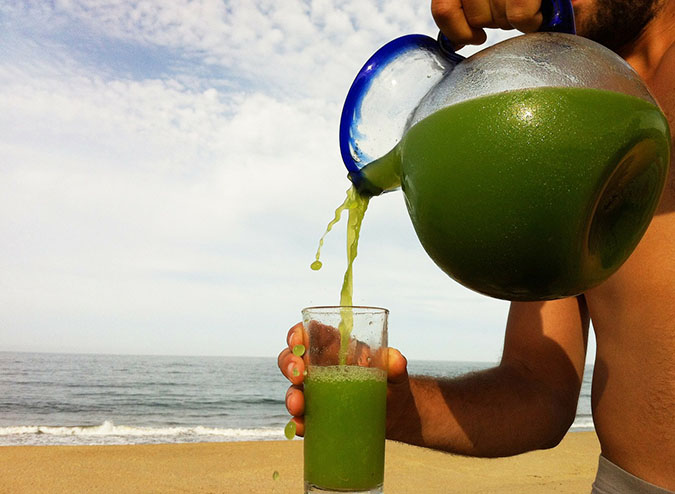
Image by kaia porter from Pixabay
If you don’t have a juicer, just fill up your blender. Add a little water to help it get started, and then strain out the pulp when you’re done. Jelly straining bags work great. Or just use a clean sock. I won’t tell.
The juice doesn’t store well, so you’ll want to drink it right away. The taste is mild, green, and refreshing. Add a splash of lemon and apple juice to taste, and now you really have something special. The flavors mingle together and really complement one another.
It’s a perfect drink for cooling down and reinvigorating yourself after a hard day of yard work.
You May Also Enjoy:
“How to Make Your Own Tinctures, Salves, and Essential Oils”
“Equisetum Hyemale (Horsetail): The BEST Plant for Tooth Health + 8 More Benefits!”
Eat only the young shoots or growing tips. Ideally, you’d gather them before they flower. Older plants accumulate silica and are just too tough to eat. They’re still okay for juice and cleavers coffee, though.
Medicinal Properties of Cleavers
Cleavers are a general nutritive herb, and can be used safely for prolonged periods of time to support growth, renewal, and overall health.3)Hoffmann, David. Medical Herbalism: The Science and Practice of Herbal Medicine. Rochester, VT: Healing Arts Press, 2003.4)Gladstar, Rosemary. Rosemary Gladstars Herbal Recipes for Vibrant Health. Pownal, VT: Storey, 2009. The aerial5)Aerial: The aboveground parts of a plant. parts are used medicinally.
One of the more common uses of this herb is as a gentle diuretic. It helps to flush out and sooth irritations of the urinary tract and kidneys.6)Foster, Steven, James A. Duke, and Steven Foster. A Field Guide to Medicinal Plants and Herbs of Eastern and Central North America. Boston: Houghton Mifflin, 2000.7)Gladstar, Rosemary. Rosemary Gladstars Herbal Recipes for Vibrant Health. Pownal, VT: Storey, 2009. Cleavers tea is often recommended for dissolving kidney stones and for other urinary issues.8)Chevallier, Andrew. Encyclopedia of Herbal Medicine. London: DK/Penguin Random House, 2016.9)Elpel, Thomas J. Botany in a Day: Thomas J. Elpels Herbal Field Guide to Plant Families. Pony, MT: HOPS Press, 2004.
You May Also Enjoy:
“Oatstraw: Stress Reliever, Love Potion, Brain Booster, and More”
Cleavers are cooling herbs, useful for bringing down fevers and for helping skin conditions related to heat and dryness.10)Foster, Steven, James A. Duke, and Steven Foster. A Field Guide to Medicinal Plants and Herbs of Eastern and Central North America. Boston: Houghton Mifflin, 2000.11)Hoffmann, David. Medical Herbalism: The Science and Practice of Herbal Medicine. Rochester, VT: Healing Arts Press, 2003.12)Gladstar, Rosemary. Rosemary Gladstar’s Herbal Recipes for Vibrant Health. Pownal, VT: Storey, 2009. They are also strongly anti-inflammatory, which likely contributes to these successful uses.13)Hoffmann, David. Medical Herbalism: The Science and Practice of Herbal Medicine. Rochester, VT: Healing Arts Press, 2003.
They are often taken for diseases such as eczema, psoriasis, and seborrhea.14)Chevallier, Andrew. Encyclopedia of Herbal Medicine. London: DK/Penguin Random House, 2016. Again, tea is a popular choice. Because this herb is gentle and safe, I would drink several glasses a day.
One of cleavers’ most impressive functions is as a liver protector. Most other liver herbs will support normal liver function or cleanse the liver, but cleavers has the ability to protect the liver from harm and to actually help the liver heal.15)Elpel, Thomas J. Botany in a Day: Thomas J. Elpels Herbal Field Guide to Plant Families. Pony, MT: HOPS Press, 2004. Herbs that do this are relatively few and far between, so it’s nice to make a mental note when you find one. (Milk thistle would be another example.)

Image by Thanasis Papazacharias from Pixabay / Like cleavers, milk thistle helps heal the liver.
Another equally impressive function of cleavers is as a lymph mover. It helps keep everything moving, clear swollen lymph glands, strengthen the immune system, and generally improve a wide range of lymphatic issues.16)Chevallier, Andrew. Encyclopedia of Herbal Medicine. London: DK/Penguin Random House, 2016.17)Elpel, Thomas J. Botany in a Day: Thomas J. Elpels Herbal Field Guide to Plant Families. Pony, MT: HOPS Press, 2004.18)Deane. “Goosegrass, Cleavers, Bedstraw.” Eat The Weeds and Other Things, Too. December 17, 2017. Accessed May 13, 2018. http://www.eattheweeds.com/galium-aparine-goosegrass-on-the-loose-2/.19)Gladstar, Rosemary. Rosemary Gladstar’s Medicinal Herbs: A Beginners Guide. North Adams, MA: Storey Pub., 2012.20)Hoffmann, David. Medical Herbalism: The Science and Practice of Herbal Medicine. Rochester, VT: Healing Arts Press, 2003. It’s an excellent tonic for the whole lymphatic system.21)Hoffmann, David. Medical Herbalism: The Science and Practice of Herbal Medicine. Rochester, VT: Healing Arts Press, 2003.
In this respect, cleavers is much like pokeweed. But if you read my article on that topic, you’ll remember that, while pokeweed is a powerful medicine, it doesn’t go out of its way to be user friendly. In fact, it’s quite dangerous. Cleavers offers a much safer alternative for this function, without sacrificing potency.
You May Also Enjoy:
“Pokeweed: The Weed, the Myth, the Legend”
“15 Natural Aphrodisiacs & Simple Ways to Prepare Them”
“Edible Redbud Flowers—The Delicious and Nutritious Harbinger of Spring”
Cleavers’ detoxifying properties also give it a place in holistic cancer strategies.22)Foster, Steven, James A. Duke, and Steven Foster. A Field Guide to Medicinal Plants and Herbs of Eastern and Central North America. Boston: Houghton Mifflin, 2000.23)Hoffmann, David. Medical Herbalism: The Science and Practice of Herbal Medicine. Rochester, VT: Healing Arts Press, 2003. This is especially true of the juice.24)Chevallier, Andrew. Encyclopedia of Herbal Medicine. London: DK/Penguin Random House, 2016.
Older plants are a source of silica. Silica is a compound that aids the body in innumerable ways, many of which we may not yet understand.25)Martin, K. R. “The Chemistry of Silica and Its Potential Health Benefits.” Advances in Pediatrics. Accessed May 14, 2018. https://www.ncbi.nlm.nih.gov/pubmed/17435951/.
In Alternatives to Dentists, Doug Simons talks about the importance of silica for tooth health. His plant of choice, however, is a specific species of horsetail (Equisetum hyemale). If you’d like to learn more about Doug’s tried-and-true method of healing teeth and keeping them healthy, click here.
The Grow Network offers Equisetum hyemale—wildcrafted by Doug Simons himself in pristine wilderness environments—in our store. Click here to get yours!
Amounts and Methods
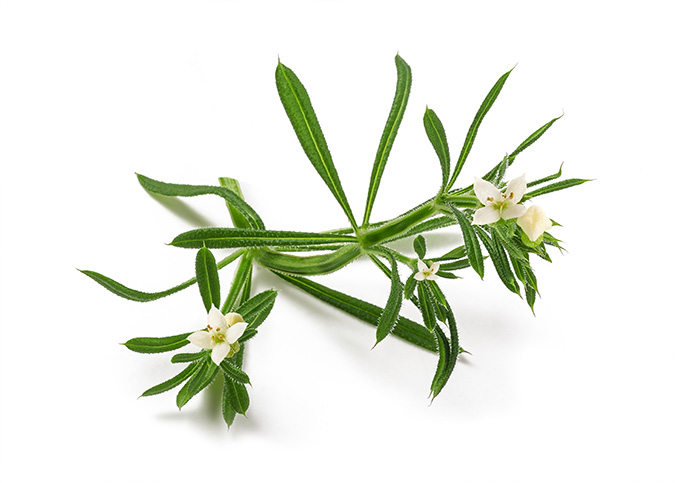
Once cleavers start to flower or form their fruit, their energy goes into reproduction, and they become less potent.
Common methods of application are tea, powder, tincture, and juice. Fresh juice is generally considered to be the most potent, though you could also make an argument for the tincture. The juice can be frozen in ice cube trays, as mentioned above, and saved for later in the year. (Incidentally, this happens to be a nice dosing size.)
Younger plants are more potent for most medicinal applications. Once they start to flower or form their fruit, their energy goes into reproduction, and they become less potent.
You May Also Enjoy:
“Siberian Ginseng: The Adaptogen for Astronauts, Athletes, and Anyone Under Stress”
However, if you’re looking for silica, everything is backwards. Older plants have more silica than younger ones, so don’t harvest those tender young shoots. Wait until they’re too tough to eat. A lot of that toughness is the silica.
The preferred methods are backwards, too. Fresh juice is okay, but if you strain out the pulp, you’re losing a lot of the silica-rich body of the plant. Dried plant powder is best because it retains the full silica content. It can be made into tea, or stirred into liquid and swallowed whole.
The following amounts and frequencies are fairly general. Consult an herbalist if you’d like to tailor a protocol to suit your particular needs.
Tincture of Fresh Plant
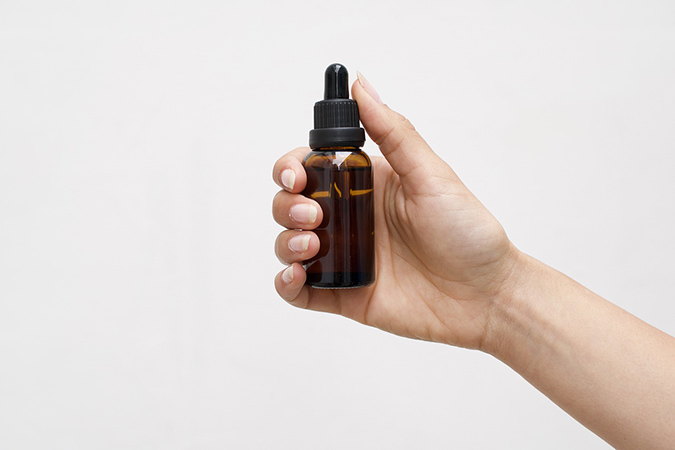
Image by Erin Stone from Pixabay
1:2 ration in 25% alcohol. Use 1–2 dropperfuls, up to 4x daily.
Fresh Plant Juice
Drink 1–2 Tbsp. (or the equivalent of one ice cube), as needed.
Infusion
Use 2–3 tsp. of dried herb. Pour boiling water over it and steep for 10–15 minutes. Drink 3 times per day, or as needed.
Powder (For Silica)
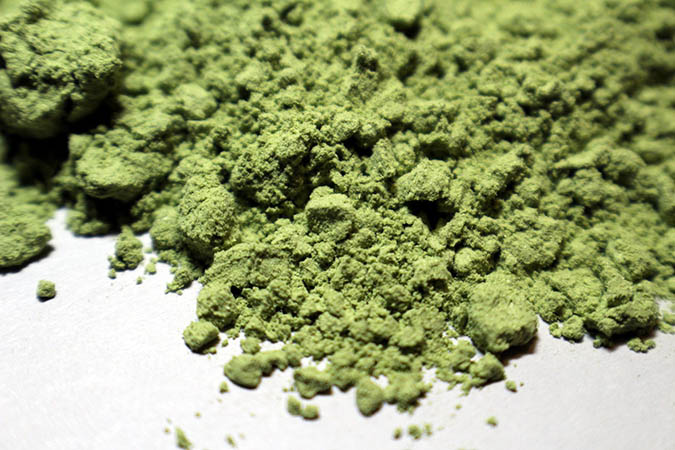
Image by Silvia Stödter from Pixabay
Stir 1–2 tsp. of powder into water. Drink it, powder and all, once or twice a day.
Cleavers has no reported drug interactions.26)Hoffmann, David. Medical Herbalism: The Science and Practice of Herbal Medicine. Rochester, VT: Healing Arts Press, 2003. However, as a diuretic it could theoretically amplify the effects of diuretic drugs. Also, cases of contact dermatitis from touching the sap have occasionally been reported.27)Foster, Steven, James A. Duke, and Steven Foster. A Field Guide to Medicinal Plants and Herbs of Eastern and Central North America. Boston: Houghton Mifflin, 2000.
What Do You Think?
What are your experiences with using cleavers as food and/or medicine? Do you have any tips beyond what I included in this article? Leave me a note in the comments below!
____________________
This is an updated version of an article that was originally published on June 8, 2018. The author may not currently be available to respond to comments, however we encourage our Community members to chime in to share their experiences and answer questions!
The Grow Network is a participant in the Amazon Services LLC Associates Program, an affiliate program designed to provide a means for our team to earn fees for recommending our favorite products! We may earn a small commission, at no additional cost to you, should you purchase an item after clicking one of our links. Thanks for supporting TGN!
____________________
Psst! Our Lawyer Wants You to Read This Big, Bad Medical Disclaimer –> The contents of this article, made available via The Grow Network (TGN), are for informational purposes only and do not constitute medical advice; the Content is not intended to be a substitute for professional medical advice, diagnosis, or treatment. Always seek the advice of a qualified health care provider with any questions you may have regarding a medical condition. If you think you may be suffering from any medical condition, you should seek immediate medical attention. You should never delay seeking medical advice, disregard medical advice, or discontinue medical treatment because of information provided by TGN. Reliance on any information provided by this article is solely at your own risk. And, of course, never eat a wild plant without first checking with a local expert.

Scott Sexton is a TGN Trailblazer, a highly experimental gardener, an unrelenting weed-eater, and a largely non-profit herbalist (much to his wife’s chagrin). When Scott is not teaching foraging classes, testing out theories in the garden, or grazing in the forest, he can be found at his Facebook page, “A Forager’s Guide to the Zombie Apocalypse.”
References
| ↑1 | Whorl: A leaf arrangement of three or more leaves around a single point. |
|---|---|
| ↑2 | Node: A point along a plant’s stem at which one or more leaves or branches can form. Certain plants can also grow roots at nodes. |
| ↑3, ↑11, ↑13, ↑20, ↑21, ↑23, ↑26 | Hoffmann, David. Medical Herbalism: The Science and Practice of Herbal Medicine. Rochester, VT: Healing Arts Press, 2003. |
| ↑4, ↑7 | Gladstar, Rosemary. Rosemary Gladstars Herbal Recipes for Vibrant Health. Pownal, VT: Storey, 2009. |
| ↑5 | Aerial: The aboveground parts of a plant. |
| ↑6, ↑10, ↑22, ↑27 | Foster, Steven, James A. Duke, and Steven Foster. A Field Guide to Medicinal Plants and Herbs of Eastern and Central North America. Boston: Houghton Mifflin, 2000. |
| ↑8, ↑14, ↑16, ↑24 | Chevallier, Andrew. Encyclopedia of Herbal Medicine. London: DK/Penguin Random House, 2016. |
| ↑9, ↑15, ↑17 | Elpel, Thomas J. Botany in a Day: Thomas J. Elpels Herbal Field Guide to Plant Families. Pony, MT: HOPS Press, 2004. |
| ↑12 | Gladstar, Rosemary. Rosemary Gladstar’s Herbal Recipes for Vibrant Health. Pownal, VT: Storey, 2009. |
| ↑18 | Deane. “Goosegrass, Cleavers, Bedstraw.” Eat The Weeds and Other Things, Too. December 17, 2017. Accessed May 13, 2018. http://www.eattheweeds.com/galium-aparine-goosegrass-on-the-loose-2/. |
| ↑19 | Gladstar, Rosemary. Rosemary Gladstar’s Medicinal Herbs: A Beginners Guide. North Adams, MA: Storey Pub., 2012. |
| ↑25 | Martin, K. R. “The Chemistry of Silica and Its Potential Health Benefits.” Advances in Pediatrics. Accessed May 14, 2018. https://www.ncbi.nlm.nih.gov/pubmed/17435951/. |
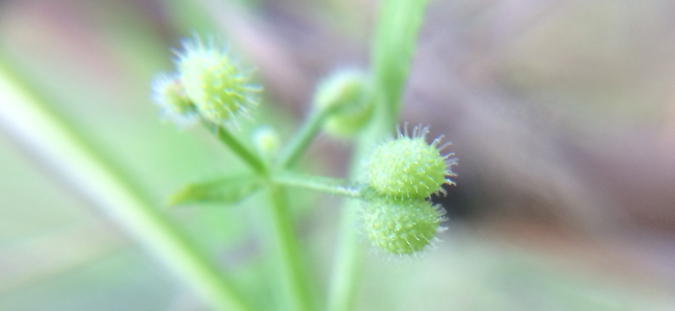
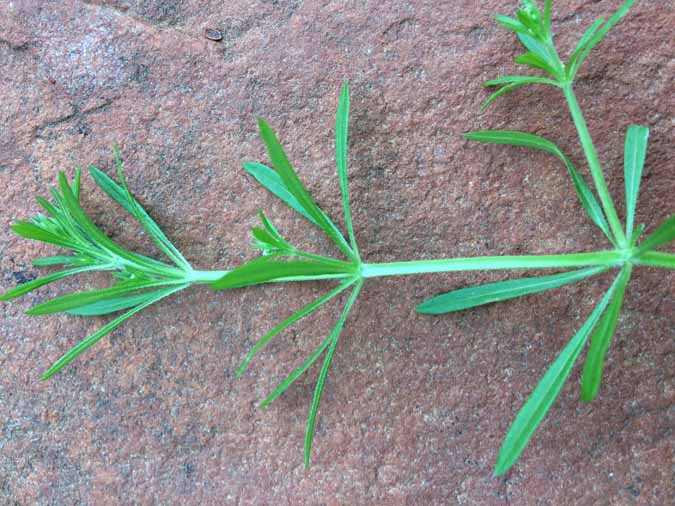
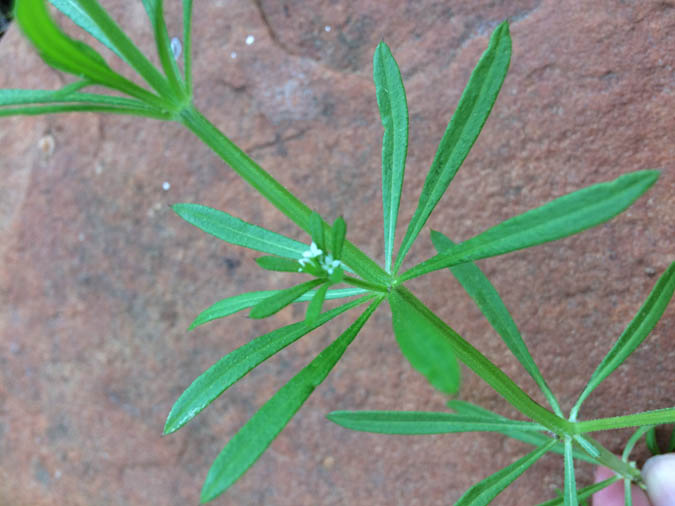
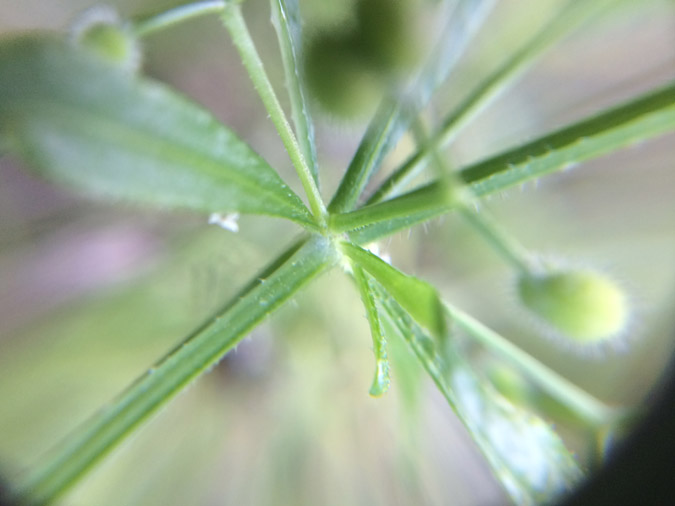









COMMENTS(12)
Scott, THANK YOU SO MUCH for this post! I really cannot thank you enough…
Well, I’m so glad you enjoyed it!
I found a cleaver plant last summer, growing under my favorite apple tree. I waited till it had seeds & saved the whole plant. Should I plant the seeds now?
Plant them whenever you want and let nature take its course. I don’t know for certain, but I expect they are the type of plant that requires a period of cold before they’re germinate. So you likely won’t see them come up until next spring.
You can eat chopped cleavers raw in a salad and also add them the last minutes at other cooked or baked vegetables.My favorite is cleavers in meals with eggs together with goutweed and nettles.
Although I’m generally not a fan of cleavers as a veggie, that egg recipe sounds promising. You’ve got me curious. I’ll have to give it a try next spring. Thanks.
Cleavers is very special to me, especially since I experienced its help with an abscessed tooth. Keep in mind, I’m an herbal newbie. Matthew Wood’s The Book of Herbal Wisdom states several wonderful uses regarding cleavers, among them as “a remedy for swellings and ear pain, …one of the most important remedies for swollen glands, especially around the ears and down the neck”. “It is used in all cases in which we find bad blood”. It gives almost ‘infallible’ results in preventing miscarriage. According to many herbalists, cancer patients need glandular support, and cleavers is used as a helper for this by many of them. Matthew Wood has much more wonderful information in his book about cleavers.
Sajah Popham gives an herbal formula that is a lymph helper that includes calendula, red clover and cleavers as three primary herbs in the formula. So much more about this can be learned by the two men above and Dr. Sharol Marie Tilgner if one wants to learn more. I used red root in an attempt to help with abscessed tooth pain, but in my case cleavers helped more.
I find that cleavers often cling to the side of my throat. I am probably undercooking them.
Could this be the same as what we call ‘stinging nettle’.
Hi Vivo805. Cleavers and stinging nettles are different plants. The hooklike hairs on cleavers are rough to the touch, but they do not sting. 🙂
I made cleaver soup last week and it was just OK. Even though I picked it young the soup had bitter overtones. I am still a fan as I am motivated to eat well and not just tasty. However when the two meet…that’s the sweet spot. I will try the soup again but try to add in some other herbs, perhaps lovage or sorrel to improve the taste. Thanks!
I cannot wait until my Cleavers starts to grow! Thanks Scott for another great article!